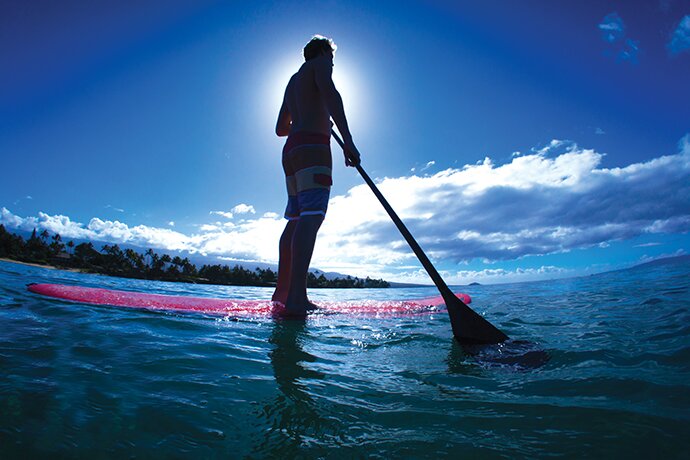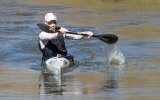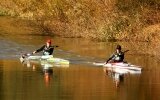- Magazine
- #readityourway
- Weekly Stories
- #shareyourstory
-
Adventure
- Abroad Travelling
- Africa Travelling
- Events
- Expos & Shows
- Festivals
- Fishing
- Free Diving
- Gliding
- Horse Riding
- Inspiring People
- Islands Travelling
- Kite/Windsurfing
- Motorbiking
- Motorised Water Sports
- Mountaineering
- Mountain Biking
- Off-road 4x4
- Off-road Motorbiking
- Paddling
- Performance Driving
- Photography
- Rock Climbing
- Rollerblading
- Sailing
- Scuba Diving
- Skateboarding
- Skydiving
- Snowboarding & Skiing
- Surfing
- Swimming
- Trail Running
- Wakeboarding
- Waveski Surfing
-
Sport
- Adventure Racing
- Fishing
- Free Diving
- Gliding
- Health & Fitness
- Horse Riding
- Inspiring People
- Kite/Windsurfing
- MMA
- Motorbiking
- Mountain Biking
- Multi-sport
- Off-road 4x4
- Off-road Motorbiking
- Paddling
- Performance Driving
- Photography
- Road Cycling
- Road Running
- Rock Climbing
- Rollerblading
- Sailing
- Scuba Diving
- Skateboarding
- Skydiving
- Snowboarding & Skiing
- Surfing
- Swimming
- Rugby
- Trail Running
- Triathlon
- Wakeboarding
- Waveski Surfing
- Lifestyle
- Calendar
In pursuit of SUP perfection
Words: Anton Nel & Gunter Berger | Photos: Anton Nel
Topic:
Paddling
Stand up paddling (SUP) or paddle boarding as it’s also known, is one of the biggest water sport crazes around the world. And while SUP’ers will attest to the sport being relatively easy to master, correct stroke techniques and being gear savvy are essential to the overall enjoyment of this activity. Two important issues to look at here are paddle length and the paddle stroke to improve efficiency and effectiveness of each paddle stroke and avoid injury through improper paddle stroke.

Paddle Length
To determine if your SUP paddle length is at the right height for you, follow the guidelines below.
To measure the length of your paddle, stretch your arm above your head with the paddle in front of you and the blade on the floor in front of your big toe. The initial length of your paddle should be when the handle fits comfortably into the second knuckle of your hand. Try one or two paddling sessions like this and if you feel that you are inclined to keep grabbing the shaft with your top hand, then it’s time to move on to step two.
1. Note the relaxed bend in the elbow with only the fingers over the handle.
2. The arm is too stretched here and has very little bend in the elbow. The shaft is the same shaft length as in the first picture, but the handle is now in the palm of the hand.
The next step is to cut the shaft down a portion, so that the elbow maintains a relaxed bend and the handle fits snugly into the palm of your hand. If your paddling style still tends to make you grab at the shaft below the handle with your top hand or only curling the fingers over the handle, then you need to shorten the shaft again.
When shortening it, cut the shaft down so that the top of the handle is level with your wrist when reaching up with a relaxed bend in the elbow and the paddle on the floor in front of your big toe. Paddling with a bent arm will help you avoid putting strain on the shoulder rotator cuff. At the power point of your paddle stroke (when the blade is fully submerged in the water), the top hand, with this bend, must not be above your head, as it will put excessive strain on the shoulder.
The above is purely a guide because the type of board you use will also determine the paddle length. For example, if you're using a dug-out type board (ace), where your feet are level with the water, you should rather go for a shorter paddle. When paddling in the surf, an even shorter measurement guide is recommended, as you will want a more manoeuvrable paddle.
You also need to bear in the mind that when starting out, you will generally stand more upright and use more shoulder and arm muscles in the paddle stroke. As a result of this, you will feel more comfortable with a slightly longer paddle, whereas a shorter length paddle will put more strain on your lower back and legs. As you get fitter, you will start to use your entire body more in the paddling stroke. You will bend lower at the hips, while bending and straightening the legs through the stroke (using more of the body’s trunk and power in the paddle stroke). However, this can result in the paddle being buried deeper into the water on each stroke, and if this is the case, you might need to shorten the paddle shaft.
There is no one paddle size/length that is the best, but the trend nowadays is to choose a shorter paddle. Before you rush out and buy one though, remember that shorter does not suit everyone. Some paddlers have a very high paddling cadence and some have a slower, longer and more powerful stroke. Your fitness and body type will naturally determine this. However, the one thing that most paddlers do seem to agree on is that a vertical blade pulling through the water is the most efficient. So, any additional paddle angle created from a longer reach (using a very long shaft) might not be worth the effort. The only way to see what will work best for you is to spend time on the water and be patient!

Paddle Stroke
Now when it comes to paddle strokes, the seemingly obvious motion of paddling on a SUP board may be more technical than it seems at first. Paddling technique becomes even more important once you enter the world of competitive racing and wave riding because it makes a big difference to board acceleration and glide, as well as paddler endurance and fatigue.
Below are 19 steps to help you perfect your paddle stroke:
1. Your posture should start relatively upright, with your knees slightly bent.
2. Remember to keep your head upright, with your eyes looking in the direction of your destination.
3. Grab your paddle with your bottom hand halfway down the shaft, and your top hand comfortably gripping the handle above.
4. Extend your bottom arm to directly in front of you, with your top hand slightly bent and positioned just above your head.
5. Your paddle stroke is a very vertical motion, with only minor allowance for horizontal blade movement. So in saying this, we mean that the paddler should pay attention to moving the paddle in a motion that is vertical from top down rather than horizontal, like in traditional canoe paddling.
6. Start your paddling motion by extending your front arm and bending your back forward in one seamless motion. The faster you can do this motion, the less energy your stroke will require, as the blade already enters the water at an accelerated pace and therefore reduces the amount of effort required to drive the blade through the water.
7. Enter the blade of the paddle as far as possible to the front of the board without affecting your balance.
8. Your blade should be fully submerged in the water as you drive the blade through the water.
9. Focus on pushing with your top hand rather than pulling with your bottom hand.
10. Instead of using the power in your arms to drive the blade through the water, imagine that your arm is a hyper extension to your back and use your back and hyper-extended arm to generate forward drive by leaning on the paddle with your body weight.
11. The blade needs to run parallel to the board and as close as possible to the board to achieve least resistance.
12. Exit the paddle blade as soon as it gets to your feet. Every inch after your feet that the blade remains in the water contributes towards wasted energy and very little benefit in relation to the energy exerted.
13. As you practice your paddle stroke, focus on flicking your wrist to enable a quick release of the blade from the water.
14. As your blade exits the water, your back should be at a 75 degree bend to your legs.
15. Recover your blade to the start position by driving your bottom hand forward and therefore swinging the blade out in front of you.
16. Repeat this motion until you see the board moving off course, which is the indicator that you need to change hands and switch paddling sides.
17. A perfect hand switch can make a massive difference to your paddling performance. So make the hand switch a proactive motion, where you seek to increase your paddle stroke rate by saving time on the switch over.
18. The hand switch should be a rhythmic motion with your blade landing at just the right spot on the other side of the board. From there, your blade should be at the correct position, ready to thrust back into the water.
19. Find your paddling rhythm and manage your stroke rate depending on your fitness level, as well as the circumstances in a race or whilst catching and riding a wave.
Remember that everyone has their own unique paddling style, so use these pointers to formulate a paddling style that works best for you.
dinFO
If Stand Up Paddling is unchartered waters for you and you'd like to find out more about this exhilarating sport, then visit www.star-board.co.za
Issue:
Issue 27 Jul 2013
Related content
|
|
|
|
|
|
|
|
|
|









